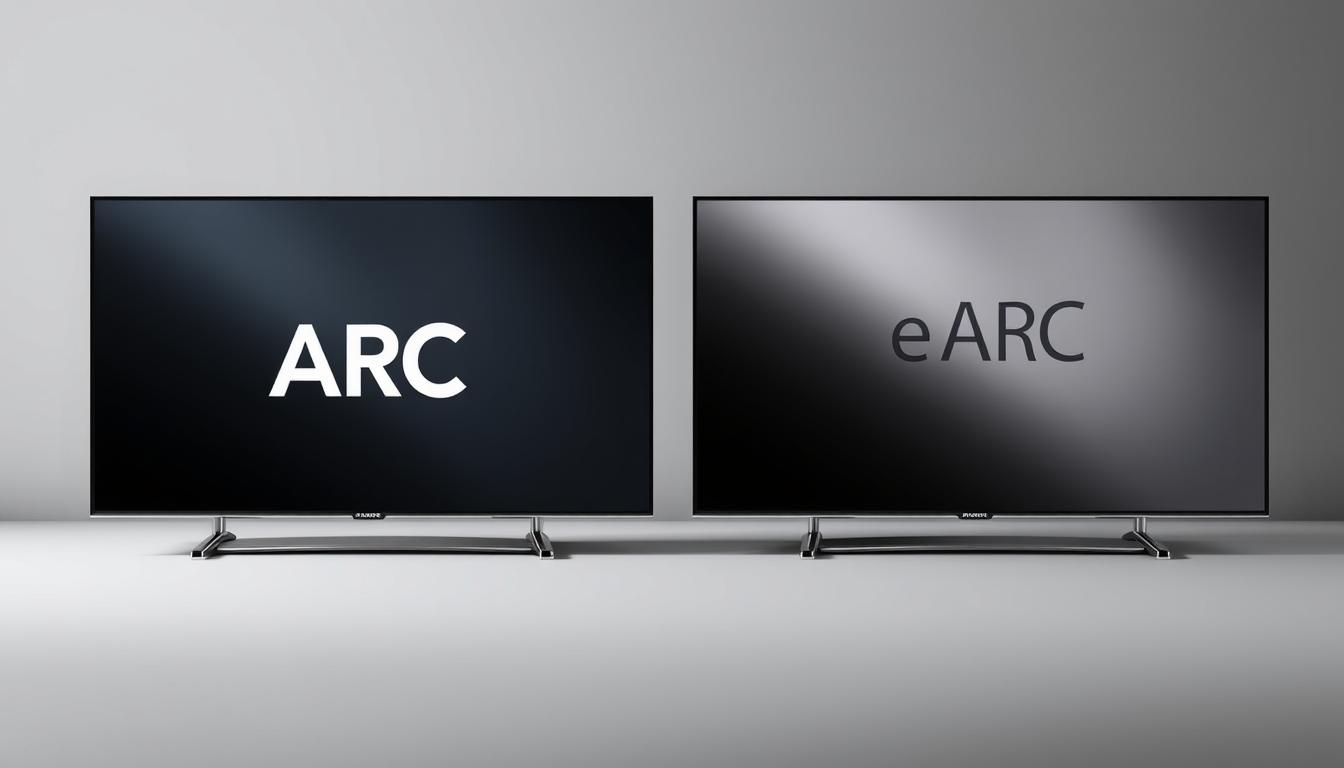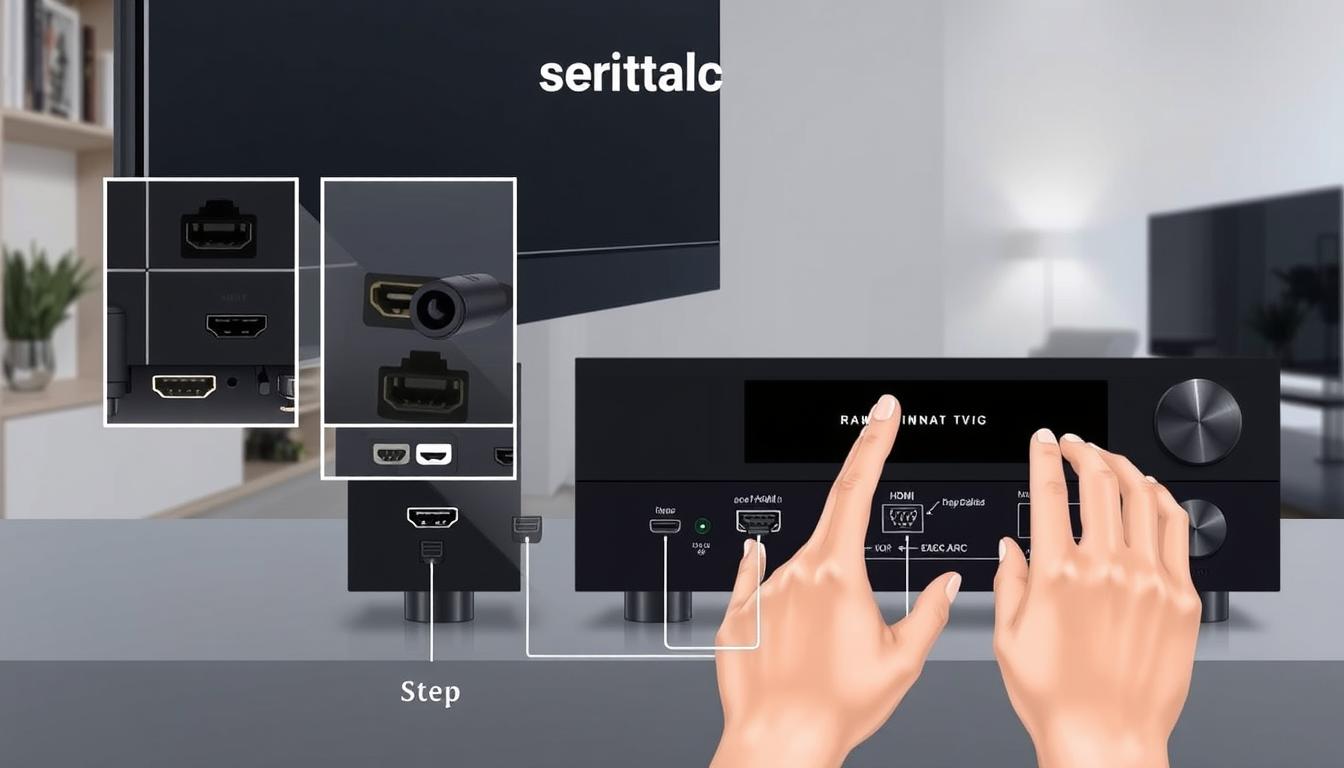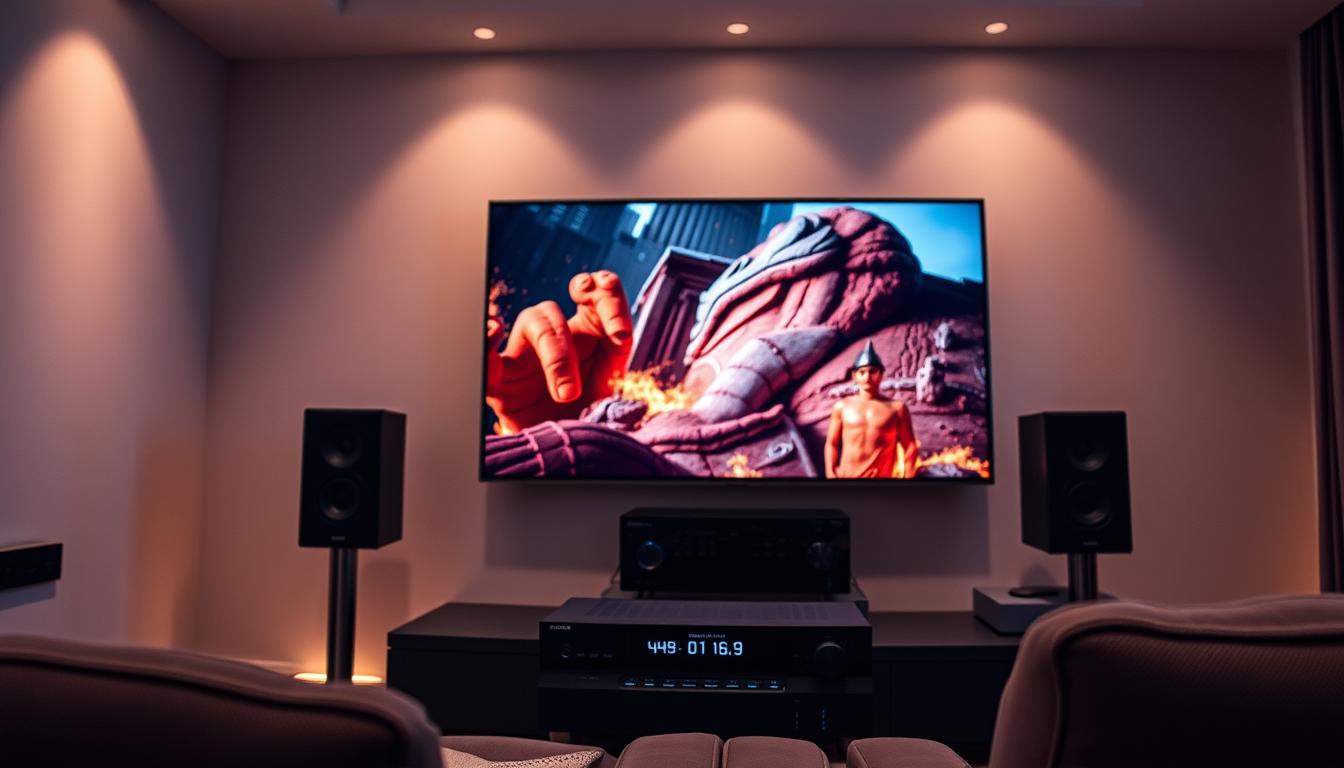Did you know 83% of premium TVs sold since 2020 support eARC technology, yet only 37% of users actually activate this game-changing feature? This oversight leaves millions experiencing compressed audio when their equipment could deliver studio-quality sound.
The Enhanced Audio Return Channel revolutionizes how your entertainment system handles high-definition formats like Dolby Atmos and DTS:X. Unlike older ARC standards, this innovation maintains pristine signal quality between your television and audio devices through HDMI 2.1 connections.
Modern receivers from Sony and other leading brands automatically detect compatible components when properly configured. You’ll need certified Ultra High Speed HDMI cables to handle the increased bandwidth – a crucial detail many overlook during installation.
This guide simplifies the technical aspects while addressing real-world setup challenges. From verifying device compatibility to optimizing audio settings, you’ll eliminate guesswork and achieve theater-grade performance without extra wires or complex configurations.
Key Takeaways
- eARC delivers lossless audio formats that standard ARC can’t support
- HDMI 2.1 cables with Ethernet are mandatory for full functionality
- Most 2020+ TVs and receivers already contain hidden eARC capabilities
- Simplifies wiring by removing separate audio connections
- Universal principles work across Sony, Samsung, and other major brands
Understanding ARC and eARC Technology
Modern entertainment systems demand more than basic audio transmission. ARC (Audio Return Channel) simplifies connections by sending TV sound to receivers through HDMI cables. This eliminates extra wires while maintaining decent quality for everyday viewing.

Differences Between ARC and eARC
Standard ARC handles compressed formats like Dolby Digital but struggles with newer audio standards. eARC upgrades this function with 38 Mbps bandwidth – 37 times more than ARC’s capacity. This leap enables lossless formats that preserve every detail of studio recordings.
| Feature | ARC | eARC |
|---|---|---|
| Max Audio Quality | Compressed 5.1 | Uncompressed 7.1.4 |
| Supported Formats | Dolby Digital | Dolby TrueHD, DTS:X |
| Bandwidth | 1 Mbps | 38 Mbps |
| Error Correction | Basic | Advanced |
Why eARC Is Superior for Modern Audio Setups
You’ll hear the difference with object-based audio in 4K Blu-rays and streaming services. eARC’s return channel carries multi-channel LPCM signals that standard ARC can’t process. This means true 3D sound placement for helicopter effects in movies or crowd noise in sports broadcasts.
The technology automatically switches to ARC mode for older devices, ensuring compatibility. Its enhanced error correction prevents audio dropouts during intense action scenes. With 82% of new movie releases using Atmos tracks, eARC becomes essential for premium setups.
How to Enable eARC on Compatible TVs and Receivers
Setting up enhanced audio begins with proper hardware alignment. Verify your television and receiver specifications list eARC support – this appears under audio features or HDMI settings. Newer models often include this capability but require manual activation.

Preparing Your Devices and Checking Compatibility
Grab a certified High Speed HDMI Cable with Ethernet – standard HDMI cables lack the bandwidth for lossless formats. Connect one end to your TV’s HDMI ARC/eARC port, typically labeled in bold lettering. The receiver end plugs into the designated MONITOR 1 input, which handles advanced audio protocols.
Update firmware on both devices before proceeding. Manufacturers like Sony and Denon frequently release patches that improve eARC functionality. Check system information menus for current software versions.
Step-by-Step Instructions for eARC Activation
Access your receiver’s home screen and navigate to Setup > HDMI Settings. Enable “Control for HDMI” to establish device communication. Select “eARC” from the audio return channel options, bypassing legacy ARC modes.
Switch to your television’s audio output menu. Activate eARC mode under HDMI or sound settings – location varies between Samsung’s Sound Expert and LG’s Sound Share interfaces. Return to the receiver’s home panel and select Watch > TV to test the connection.
Successful activation delivers crisp Dolby Atmos effects through your speaker system. If audio cuts out, reseat cable connections and confirm both devices use HDMI 2.1 ports. Most setups stabilize after one reboot cycle.
Configuring HDMI Settings and Troubleshooting Issues
Optimizing your audio system requires precise configuration to avoid conflicts between devices. Start by accessing your television’s sound control menu and locating the HDMI output settings.
Adjusting TV and Receiver Settings
Mute your TV speakers completely through the audio menu. For models lacking System Audio Control, set [Audio Out] to [TV + AMP] in HDMI settings. This routes sound through both devices simultaneously.
Configure your receiver’s input mode to Auto for automatic format detection. Check the operation manual for manufacturer-specific terminology – Sony calls this “Signal Format,” while Denon uses “HDMI Auto Setting.”
Troubleshooting Common Connection Problems
Audio dropouts often stem from incompatible cables. Verify your HDMI cord bears the Ultra High Speed certification logo. If dialogue sync issues persist, troubleshoot common Marantz receiver issues by resetting HDMI-CEC controls.
Power cycle both devices when they fail to handshake properly. Hold the power button for 10 seconds to clear temporary glitches. Update firmware through your TV’s system menu and receiver’s network settings for optimal operation.
Input selection errors usually resolve by manually choosing the correct HDMI port. Confirm your TV’s audio output directs to the external system rather than internal speakers. Most modern receivers display active formats like “Dolby Atmos” when functioning correctly.
Conclusion
Your entertainment system reaches new heights with optimized eARC configuration. This advanced audio return channel eliminates cluttered setups by transmitting pristine sound through a single HDMI cable. Modern devices automatically sync when properly connected, delivering cinema-quality audio without compression.
Understanding the leap from ARC to eARC empowers smarter equipment choices. The enhanced function supports object-based formats that traditional connections can’t process. Your setup now future-proofs itself for emerging audio technologies in streaming and physical media.
Proper menu navigation across brands ensures consistent performance. While settings vary between Sony, Samsung, and LG interfaces, the core activation principles remain universal. Certified cables maintain signal integrity, preventing common connection issues during movie marathons or gaming sessions.
Investing in compatible devices pays dividends as content evolves. You’ll experience every detail of Dolby Atmos tracks and 4K Blu-ray audio mixes exactly as creators intended. This streamlined approach to audio management sets a new standard for home theater excellence.
FAQ
Why should I enable eARC instead of standard ARC?
eARC supports higher bandwidth, allowing uncompressed audio formats like Dolby Atmos and DTS:X. Unlike ARC, it eliminates lip-sync issues and ensures seamless transmission of high-resolution sound between devices like Sony TVs and Denon receivers.
How do I check if my TV and receiver support eARC?
Review your device manuals or settings menus for mentions of eARC functionality. Look for HDMI ports labeled “eARC” on Samsung TVs or Yamaha receivers. Ensure both devices have firmware updates installed for compatibility.
What steps enable eARC on my devices?
Use an Ultra High-Speed HDMI cable between the TV’s eARC port and the receiver. Navigate to your LG TV’s audio settings, enable HDMI eARC mode, and activate the same option in your Marantz receiver’s configuration menu.
Why is there no sound after enabling eARC?
Confirm the HDMI cable is certified for 48Gbps bandwidth. Verify eARC settings are enabled on both devices. Power-cycle the TV and receiver, and ensure the audio output is set to “Auto” or “Passthrough” in the TV’s menu.
Can I use any HDMI cable for eARC connections?
No. Only Ultra High-Speed HDMI cables with Ethernet support the bandwidth required for eARC. Older cables may fail to transmit high-quality audio signals, causing dropouts or compatibility issues.
Do both my TV and receiver need eARC for it to work?
Yes. Both devices must support eARC for full functionality. For example, pairing a Sony A90J TV with a non-eARC soundbar will limit you to standard ARC capabilities, even if the TV has eARC.
How do I troubleshoot lip-sync issues with eARC?
Adjust the audio delay settings on your receiver or TV. Ensure both devices are set to the latest firmware. Test different HDMI ports, and disable any video processing features that might interfere with signal timing.


